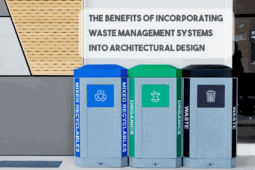“Let’s Build a Better Bin!”: Focus Group Recap
In August, Busch Systems partnered with Zero Waste Campus Council for a Focus Group to discuss current bins on the market; what features might be missing, and which trends could change the requirements of recycling and waste-diversion containers.
While we headed into the focus group expecting to harvest some seeds for new container designs (we even named the session “Let’s Build a Better Bin”), we were also intrigued by other notable topics that emerged through our discussions and break-out groups.
Below are some of our takeaways from this event. Busch Systems would like to extend a special Thank You for those who took part in this focus group event with the ZWCC – our hope is to continue, and further open-up, discussions surrounding the ideal bin design!

1) Adaptability:
First and foremost, it was clear that bin infrastructure must be flexible. Program changes are inevitable over time, so it is important to be able to easily adapt existing bins to new programs – whether that be through the ability to change lids or signage/labels, or through the option of adding bins as needed to create a larger central waste station. For example, those in the California area who have not been collecting organic waste have had to make many big changes to their programs and their bin infrastructure to incorporate the newly mandated waste stream.
2) Uniform Aesthetic:
Many organizations are large enough that they have a need for 3 or more different types of bins to use in different settings. For example, an indoor executive suite, an indoor general purpose collection station, and an outdoor waste station. The general preference of our focus group was the ability to choose one bin model or uniform ‘look’ that could be used in every setting.
The aesthetic discussions are always interesting when you look at all the factors – from a design and stream-communication perspective, one uniform ‘look’ is the most effective. But, from a maintenance & durability standpoint, one single aesthetic may be more difficult to achieve when some bins are kept indoors and others need to stand up to severe weather conditions outdoors (hail, extreme cold or heat, snow, heavy rain, etc).
3) Organics Collection:
Our focus group was held in California shortly after the new law mandating organic waste diversion came into effect, so many of our discussions circled back to the specifics of organics collection. Topics of discussion included container capacity, specifically trying to balance a desire for larger capacity organic waste bins against the resulting increased weight & maintenance considerations for bin-servicing staff. Capacity is always been a big topic of discussion with bin design – whether we are talking about waste collection, recycling, or organics; if the largest capacity isn’t always for the best, where is the “sweet spot” that makes everyone happy?
Summary
This unique event gave us the opportunity to meet face-to-face and discuss the wants and needs of program managers when looking at bin infrastructure. Waste diversion strategies are ever-evolving, and being able to gather insights from a variety of ‘boots-on-the-ground’ perspectives is invaluable for us!
We look forward to hosting more of these focus groups in the future! In the meantime, should you have any questions or specific ideas on bin design, please contact our R&D Manager, John (john@buschsystems.com). Thank you!!








